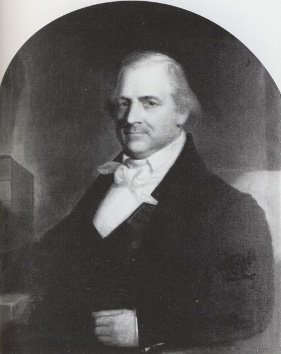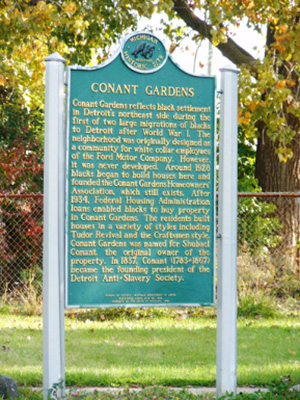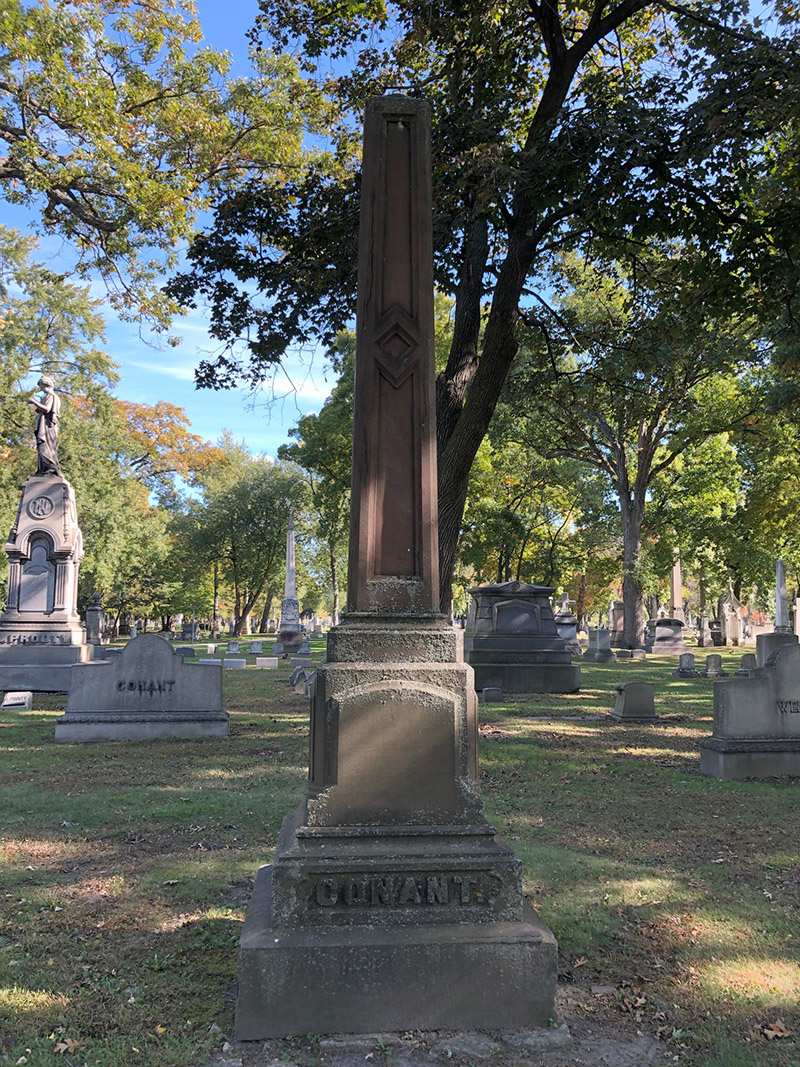 Click here to view or download a PDF.
Click here to view or download a PDF.
Shubael Conant was born in Mansfield, Connecticut, on August 1, 1783. He was the son of Eleazar Conant (1751-1819) and Eunice Storrs (1750-1790).
He was apprenticed in watch-making, at North Hampton. At 26, he engaged in other mercantile pursuits. On July 5, 1810, Conant came to Detroit with a stock of goods and opened a store on Jefferson Avenue. He remained in business until the surrender of the city to the British in 1812. He was a sergeant in Captain Solomon Sibley's militia, and was one of those who vigorously protested against the surrender.
Following the surrender, Conant packed and stored the stock of goods, and left for New England. He remained there until the victory of Perry on Lake Erie on September 10, 1813, made it clear that American rule would be securely established.
Mr. Conant returned to Detroit in 1813, and became connected with Colonel Stephen A. Mack, under the firm name of Mack & Conant. For several years this firm did as large a business as any house west of Albany, and contracted with the Government for supplying the different posts on the frontiers. They made large advances to the Government, as well as others and the business failed. Conant eventually paid every claim in full.
After closing his commercial career, Conant acted as agent for the noted furrier firm of Davis & Centre, of Albany, New York. He managed to amass considerable means. He was the builder of the "Michigan Exchange" hotel, as well as other buildings of less prominence.
Conant founded and served as the first president of the Detroit Anti-Slavery Society, organized on April 26, 1837. The Society not only demanded the abolition of slavery, but also focused attention on “the elevation of our colored brethren to their proper rank as men.” Despite a brief existence, the precedent set forth by the Detroit Anti-Slavery Society gave rise to more abolitionist groups – some public, some secret – that often employed more radical means of aiding their cause.
He was a firm believer in the Christian religion, and a member of the Fort Street Presbyterian Church. He had a political interest in ending slavery throughout his life. In his later years, he participated in meetings that lead to the formation of the Republican Party in Jackson, Michigan.
Conant left instructions in his will directing that “blacks could purchase or build new homes on his southeastern Detroit property.” He never married. He left his estate (valued at $234,603.42 in 1867) to his nephews and his nieces.
Conant died on July 17, 1867 and is buried in Section B, Lot 97. His monument is pictured below.
Conant is listed in Elmwood’s Underground Railroad Network to Freedom Self-Guided Tour Map.
The Conant Gardens Historic District is bounded by Nevada and Conant streets, and Seven Mile and Ryan roads in Northern Detroit. The land on which the district is located once belonged to Shubael Conant, an abolitionist and the founder and first president of the Detroit Anti-Slavery Society in 1837. The area was not very densely populated until the 1920s due to the boom of the automobile industry. During this time, the area was to be developed for white collar Ford workers, but there was a lack of interest. However, the boom also led to a large, prosperous African American population, who could not find neighborhoods in which they could safely live, due to violence and covenant restrictions.
Around 1928, a number of African American people realized that they could live in the Conant Gardens area due to its small population and its lack of deed restrictions for African Americans who wished to purchase property. Subsequently, many middle class African American families fleeing the inner city built their own homes in Conant Gardens or moved into preexisting homes in the area. Because the area was segregated, the Federal Housing Administration approved federally backed loans for the area after 1934.
During its heyday in the 1940s and 1950s the neighborhood had a more suburban feel, as it was far away from the more industrial areas of Detroit and surrounded by open fields. The neighborhood had single family detached houses, many of which had large lawns along quiet, tree-lined streets. The neighborhood was the most prosperous of Detroit’s black neighborhoods and held highly educated residents. By 1950, Conant Gardens had the highest median income of all of Detroit’s black neighborhoods.
 Michigan Historical Marker for Conant Gardens.
Michigan Historical Marker for Conant Gardens.

